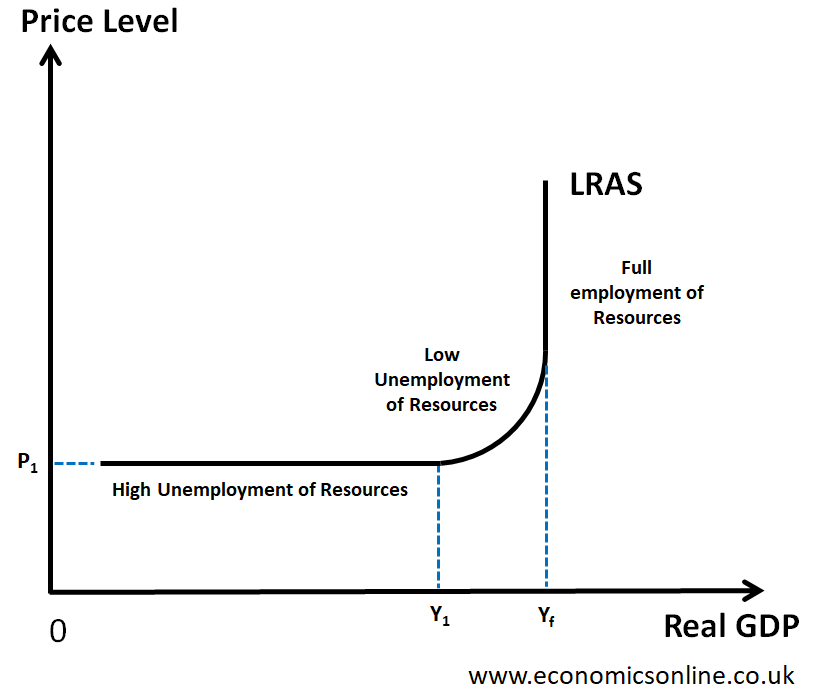The Aggregate Supply (AS) Function:
The Aggregate Supply (AS) function represents the total output of goods and services that all firms in an economy are willing and able to produce at different price levels. It is crucial to distinguish between the short run and the long run in the context of the AS function. In the short run, some input prices may be fixed or sticky, while in the long run, all input prices are flexible and can adjust fully.
Shape of the Keynesian Long Run Aggregate Supply (LRAS) Curve:
The Keynesian Long Run Aggregate Supply (LRAS) curve is a horizontal line that indicates the level of aggregate supply in the long run when the economy is not operating at full employment. Unlike the classical or neoclassical LRAS curve, which is vertical at the full employment level of output, the Keynesian LRAS curve is horizontal or flat. This suggests that, in the long run, the economy can have persistent unemployment or output gaps.
Factors Resulting in a Shift in LRAS:
Changes in Quantity, Quality, and Efficiency of Factors of Production: An increase in the quantity of factors of production, such as labor and capital, can lead to an outward shift of the LRAS curve. Similarly, improvements in the quality and efficiency of these factors can also result in a higher LRAS. For example, if the workforce becomes more skilled and educated or if technological advancements enhance productivity, the LRAS curve can shift to the right.
Changes in the State of Technology: Technological advancements can significantly impact LRAS. Improvements in technology lead to increased productivity and efficiency, allowing firms to produce more output at the same cost, leading to an outward shift of the LRAS curve.
Changes in Factor Market Flexibility: If factor markets become more flexible, for example, through labor market reforms or reduced barriers to entry for new businesses, this can enhance resource allocation efficiency and lead to a higher LRAS.
LRAS Vertical at Full Employment:
It is essential for learners to understand that the Keynesian LRAS curve is different from the classical or neoclassical LRAS curve. The Keynesian LRAS curve is horizontal, indicating that the economy can have deviations from full employment in the long run. This means that in the long run, the economy's productive capacity is not fully utilized, and there is the possibility of cyclical unemployment.
Using Policy Instruments to Shift LRAS:
Changes in policy instruments can be implemented to bring about shifts in the LRAS curve and improve the economy's productive capacity:
Investment in Education and Training: By investing in education and skill development, the quality and efficiency of the labor force can improve, leading to an outward shift of LRAS.
Infrastructure Development: Building better infrastructure can enhance the productivity of businesses, reducing costs and increasing potential output.
Research and Development (R&D) Support: Encouraging R&D activities can foster technological advancements, contributing to a higher LRAS.
Labor Market Reforms: Implementing policies that increase labor market flexibility, such as reducing minimum wage rigidity or easing labor market regulations, can boost LRAS.
Tax Incentives for Investment: Providing tax incentives to businesses for capital investment can encourage technological progress and lead to an increase in LRAS.
By implementing appropriate policy measures, governments can positively impact the LRAS curve and promote economic growth and full employment in the long run. It is essential for learners to understand these policy instruments and their potential effects on the economy's productive capacity.
